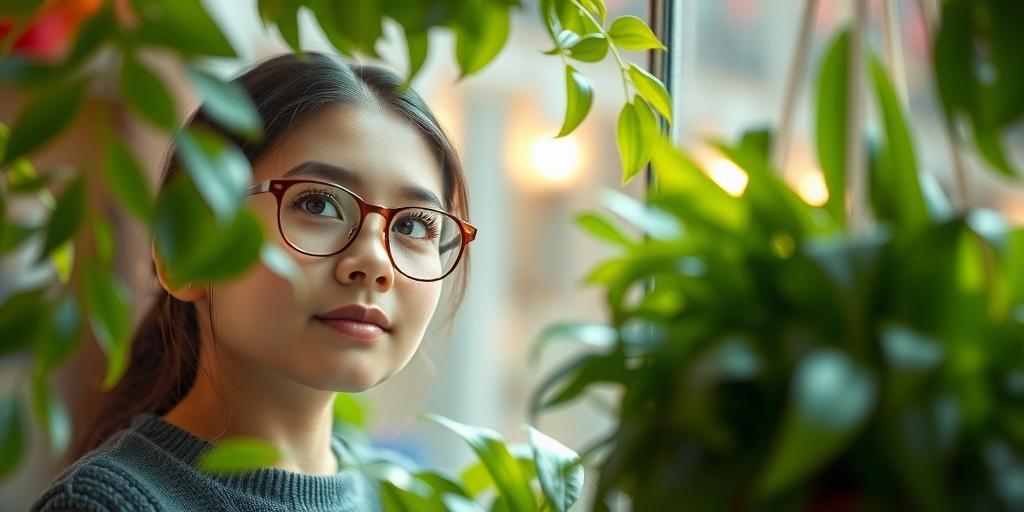
Proper Watering Techniques for Low Light Hanging Plants: A Complete Guide
Discover the best watering techniques for low light hanging plants to keep them thriving! Learn how often to water, signs of overwatering, and expert tips for healthy growth.
Introduction
Did you know that overwatering is the #1 killer of indoor plants, especially those in low light? Hanging plants add beauty to any space, but without proper care, they can quickly wilt or suffer from root rot. Whether you’re a beginner or a seasoned plant parent, mastering the art of watering low light hanging plants is key to keeping them lush and vibrant. In this guide, we’ll break down everything you need to know—from how to check soil moisture to the best watering schedules for popular varieties. Let’s dive in!
Understanding Low Light Hanging Plants
What Are Low Light Conditions?
Low light doesn’t mean no light—it refers to spaces with indirect or minimal sunlight, like north-facing windows, shaded corners, or rooms far from windows. Many hanging plants adapt well to these conditions, but their watering needs differ from those in bright light.
Common Low Light Hanging Plants
Some popular choices include:
-
Pothos
-
Spider Plant
-
Philodendron
-
Boston Fern
-
English Ivy
These plants have evolved to thrive with less sunlight, but that also means they often require less frequent watering than sun-loving varieties.
Why Watering Needs Differ
Plants in low light photosynthesize slower, meaning they use water at a reduced rate. Overwatering is a bigger risk here because the soil stays damp longer, increasing the chance of root rot. On the other hand, too little light can also stress a plant, making it more susceptible to drying out if neglected.
Signs Your Hanging Plant Needs More (or Less) Light
-
Not Enough Light: Leggy growth, small leaves, or fading color.
-
Too Much Light: Scorched or bleached leaves, even if the plant is in a “low light” category.
If you notice these signs, adjusting light exposure—not just watering—may be necessary.
How Often Should You Water Low Light Hanging Plants?
General Watering Frequency
Most low light hanging plants need watering every 1-2 weeks, but this varies. A good rule:
-
Pothos & Philodendron: Every 7-10 days.
-
Ferns & Spider Plants: Every 5-7 days (they prefer slightly more moisture).
-
Succulent-like varieties (e.g., String of Pearls): Every 2-3 weeks.
Factors That Affect Watering Needs
-
Pot Size: Small pots dry out faster; large ones retain moisture longer.
-
Humidity: High humidity = less frequent watering. Dry air = more frequent.
-
Plant Type: Some plants store water (e.g., Pothos), while others (e.g., Ferns) wilt quickly when dry.
Testing Soil Moisture
Don’t rely on a schedule alone—always check the soil:
-
Finger Test: Stick your finger 1-2 inches into the soil. If dry, it’s time to water.
-
Moisture Meter: A handy tool for precision, especially for beginners.
Best Watering Techniques for Healthy Growth
Bottom Watering vs. Top Watering
-
Bottom Watering: Place the pot in a tray of water and let the soil absorb moisture from below. Great for preventing overwatering and encouraging deep root growth.
-
Top Watering: Pour water directly onto the soil until it drains out the bottom. Faster but can lead to uneven saturation if done too quickly.
The Role of Drainage
Always use pots with drainage holes and well-draining soil (mix in perlite or orchid bark for aeration). Without proper drainage, water pools at the roots, causing rot.
Water Temperature Matters
Avoid shocking roots with cold water. Room-temperature water is ideal—let tap water sit overnight to dissipate chlorine if needed.
Signs of Overwatering and Underwatering
Overwatering Symptoms
-
Yellow, limp leaves
-
Mushy stems
-
Foul-smelling soil (a sign of root rot)
Underwatering Symptoms
-
Dry, crispy leaf edges
-
Slow or stunted growth
-
Soil pulling away from the pot’s edges
How to Fix It
-
Overwatered Plant: Stop watering, trim rotten roots, repot in fresh soil.
-
Underwatered Plant: Soak the pot in water for 30 minutes, then resume a consistent schedule.
Choosing the Right Watering Tools
Watering Cans with Long Spouts
Ideal for reaching hanging plants without splashing. Look for a narrow spout to control water flow.
Self-Watering Pots & Humidity Trays
-
Self-watering pots wick moisture as needed, great for forgetful owners.
-
Pebble trays under pots add ambient humidity, helping plants like ferns.
Misting vs. Direct Watering
-
Misting: Good for tropical plants (e.g., Ferns) but doesn’t replace watering.
-
Direct Watering: Essential for root hydration—focus on the soil, not just leaves.
Seasonal Watering Adjustments
Winter vs. Summer Care
-
Winter: Plants grow slower—water less frequently (e.g., every 2-3 weeks).
-
Spring/Summer: Increase watering as plants enter active growth phases.
Indoor Climate Effects
-
Heating/Air Conditioning: Dries out air; check soil more often.
-
Humidifiers: Help maintain moisture for humidity-loving plants.
Dormancy Periods
Some plants (e.g., certain Philodendrons) slow growth in winter. Reduce watering until new leaves appear in spring.
Top Low Light Hanging Plants and Their Watering Needs
Pothos
- Watering: Let top 1-2 inches of soil dry between waterings. Tolerates slight drought.
Spider Plant
- Watering: Keep soil slightly moist. Brown tips signal underwatering or fluoride in tap water.
Philodendron
- Watering: Water when 50-75% of soil is dry. Droopy leaves mean thirst.
Ferns (e.g., Boston Fern)
- Watering: Never let soil dry completely. Mist frequently for humidity.
English Ivy
- Watering: Prefers consistently moist (not soggy) soil. Reduce in winter.
By tailoring your approach to each plant’s needs—and adjusting for light, season, and environment—you’ll keep your low light hanging plants thriving with minimal guesswork.
Conclusion
Watering low light hanging plants doesn’t have to be a guessing game! By understanding their unique needs, checking soil moisture regularly, and adjusting for seasons, you can keep your greenery thriving. Remember—less is often more when it comes to watering in low light. Ready to transform your plant care routine? Pick one technique from this guide and try it today!
